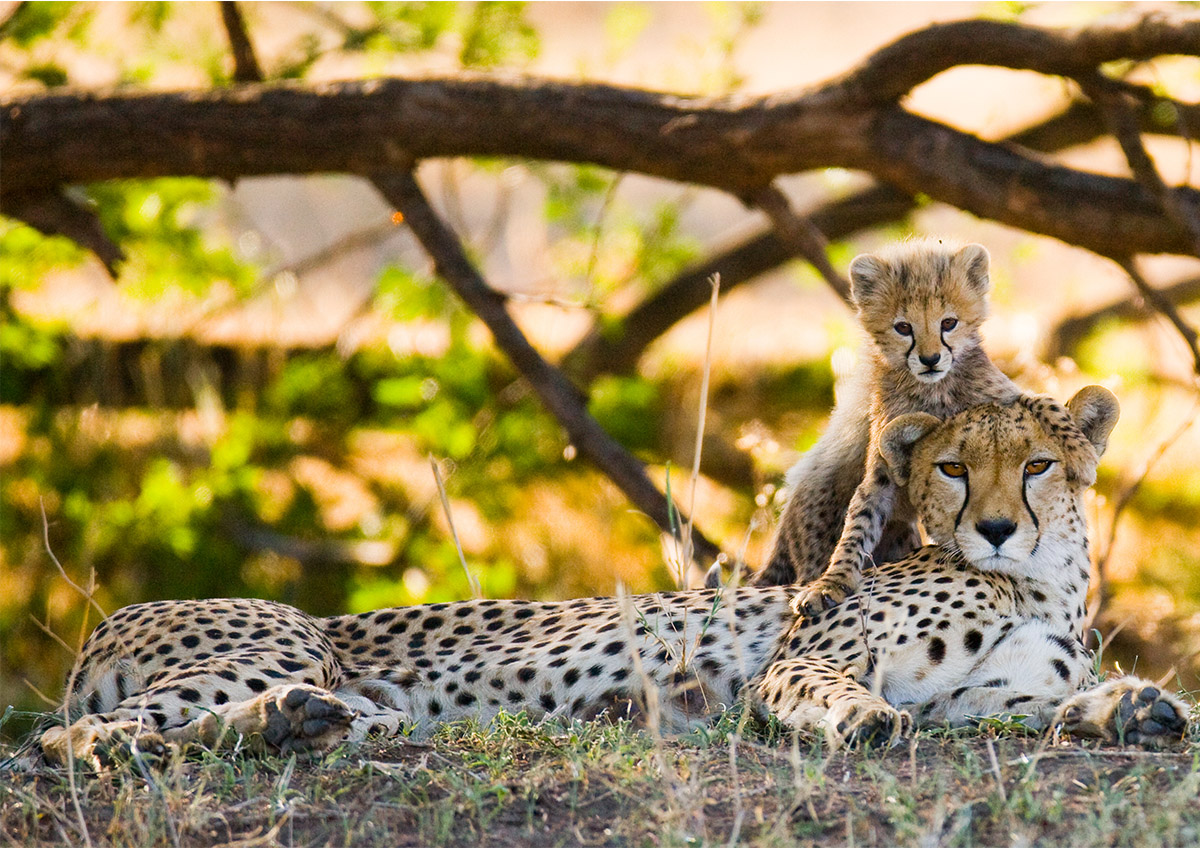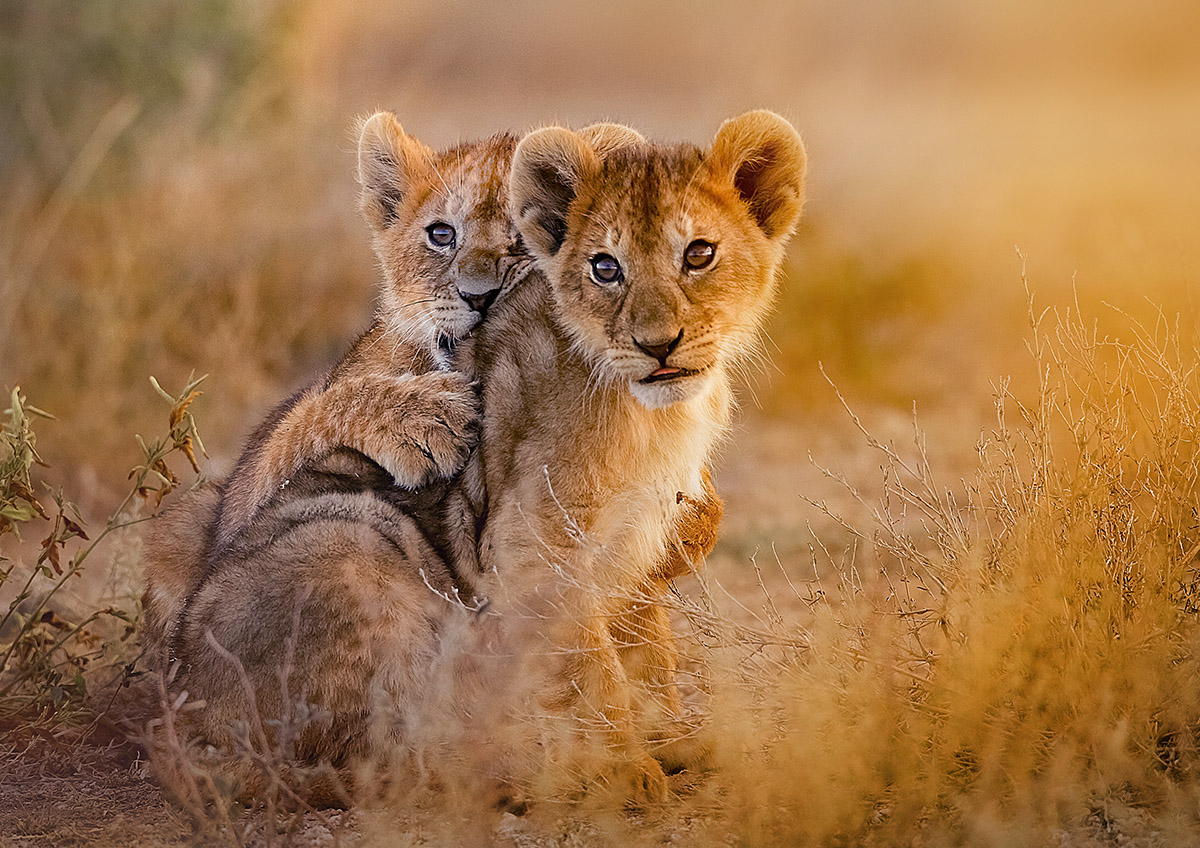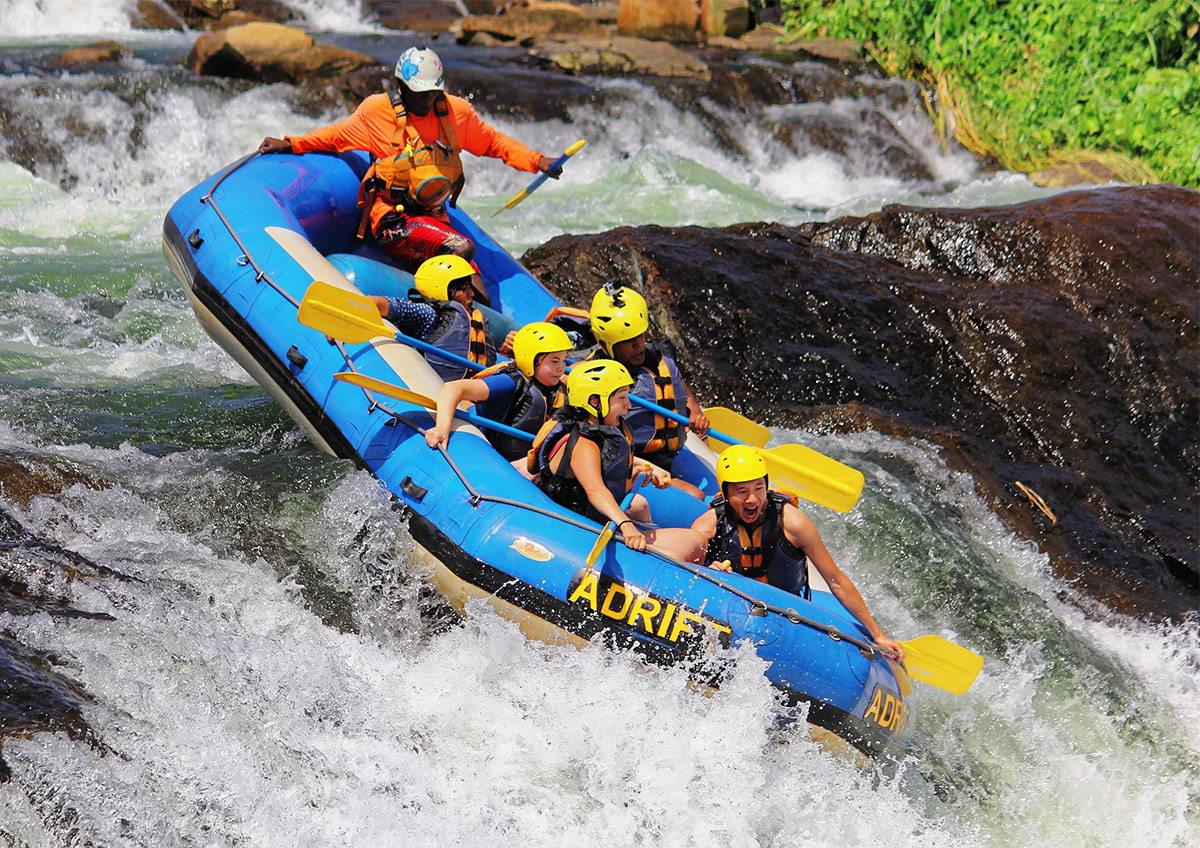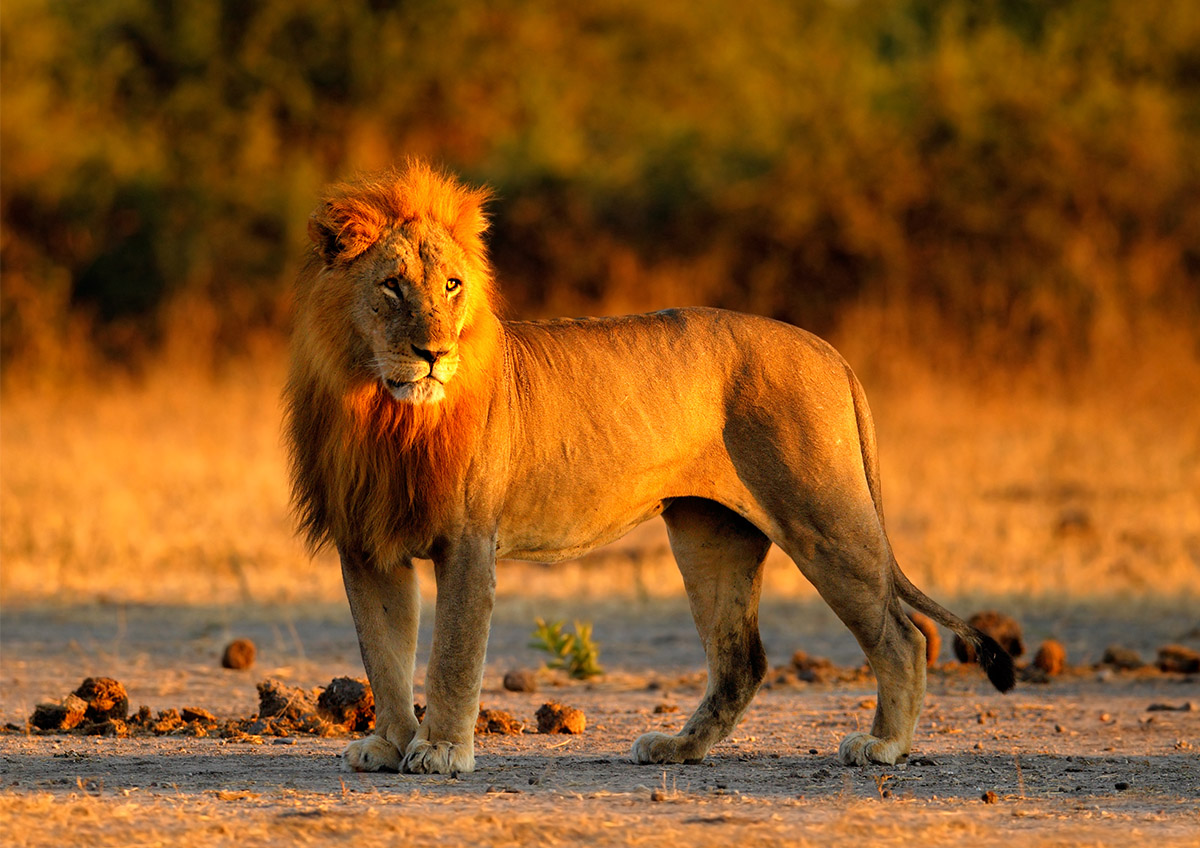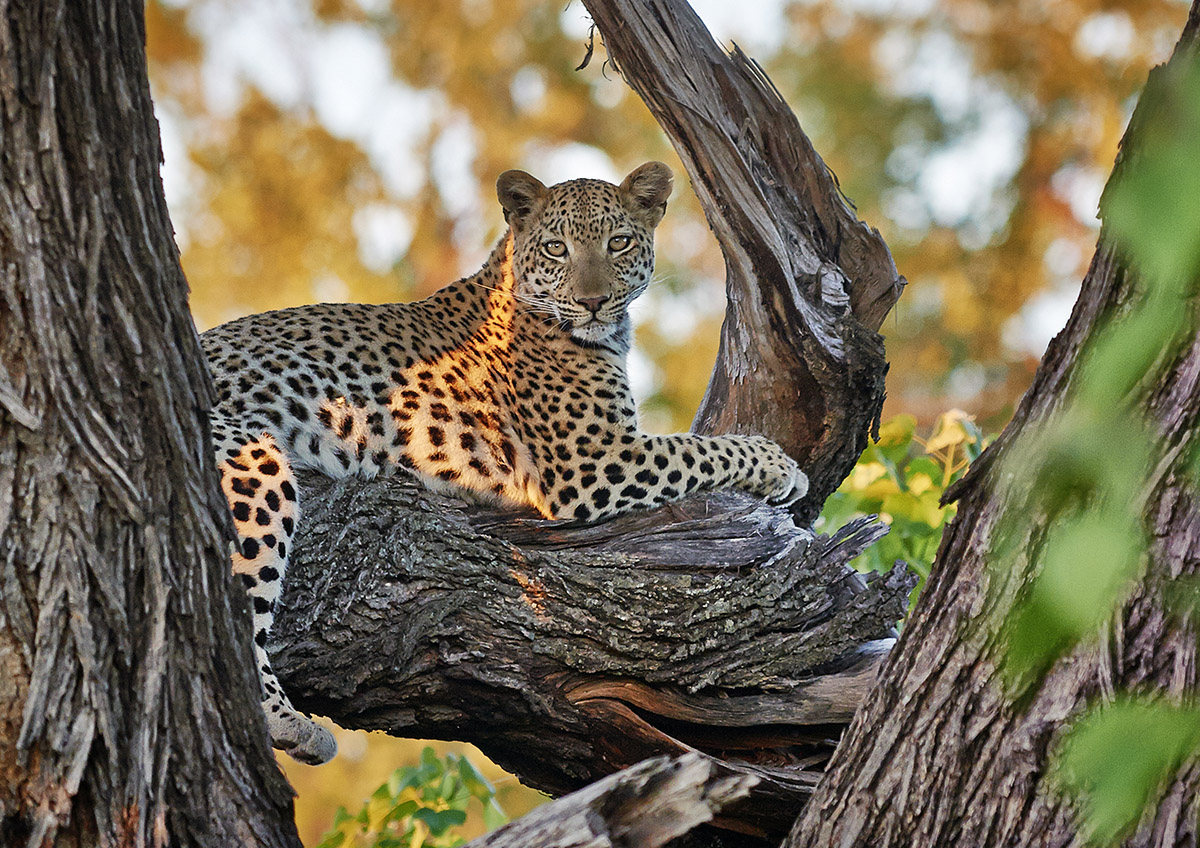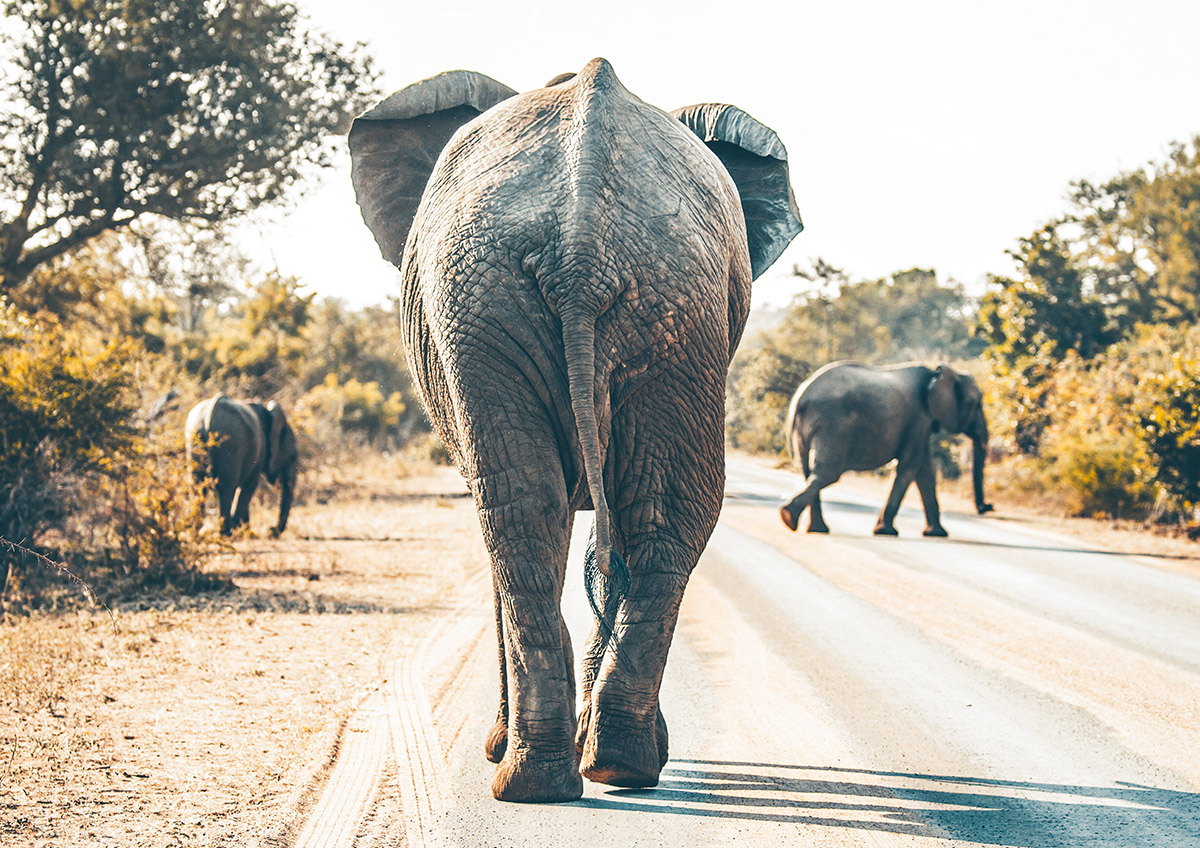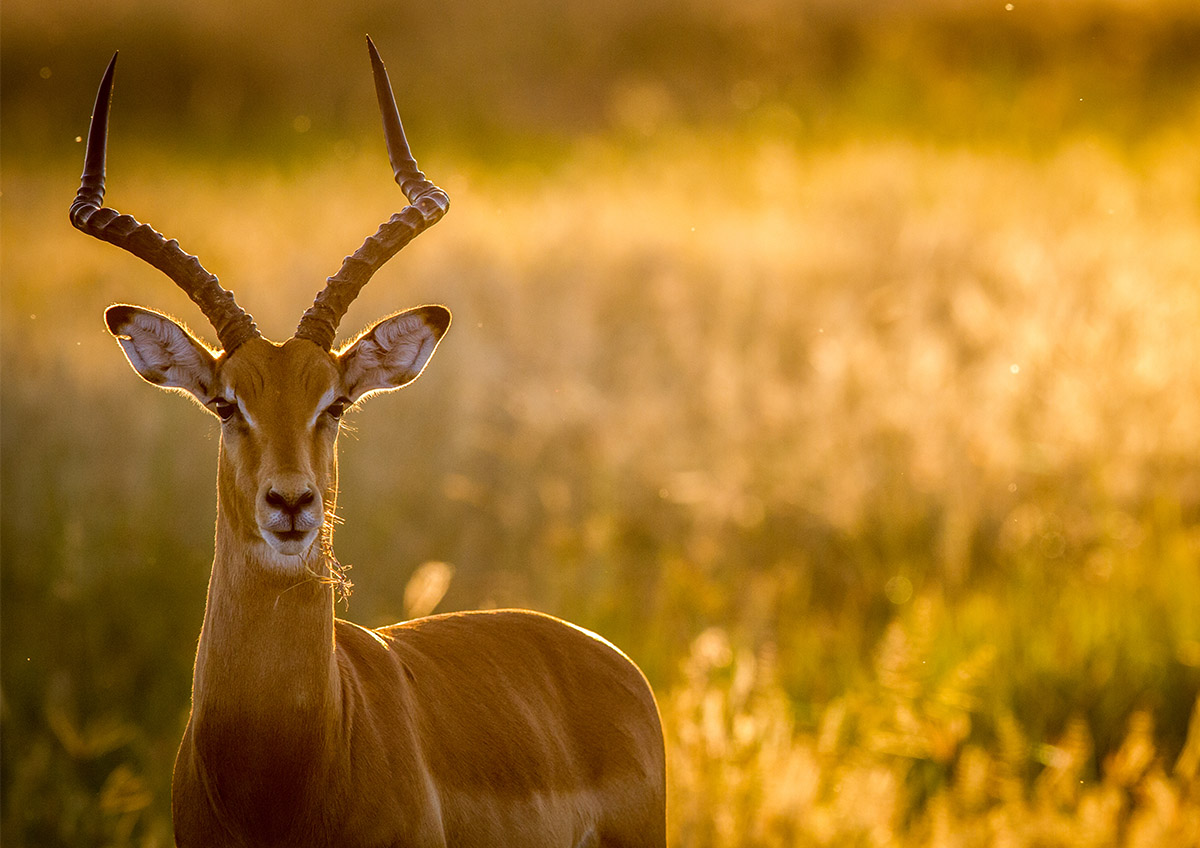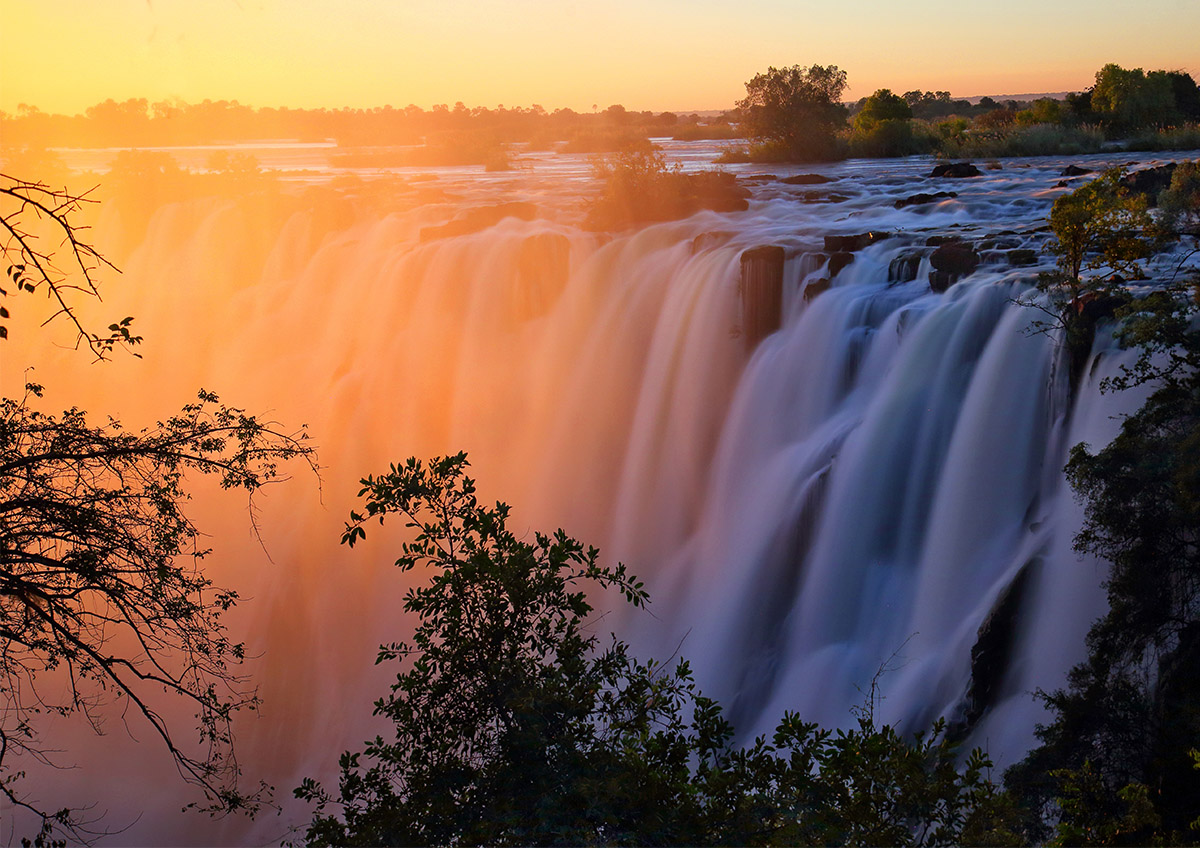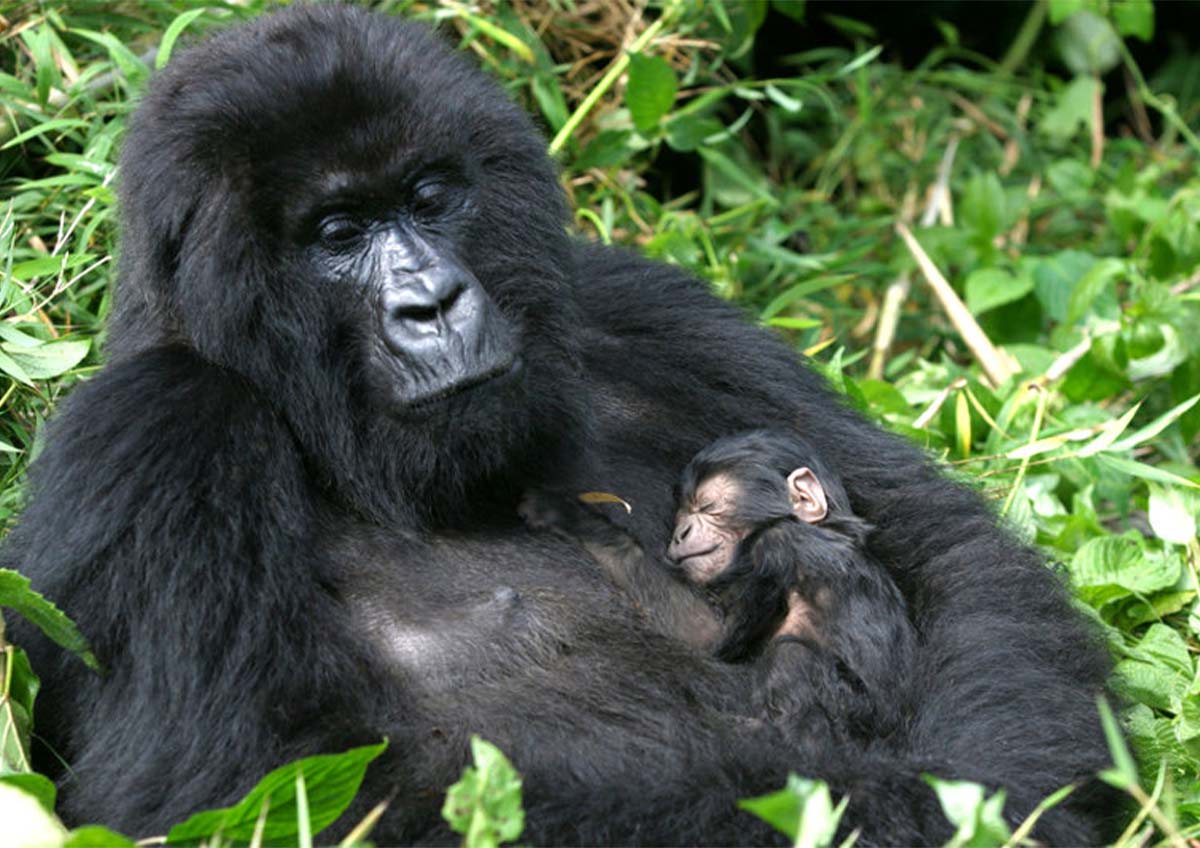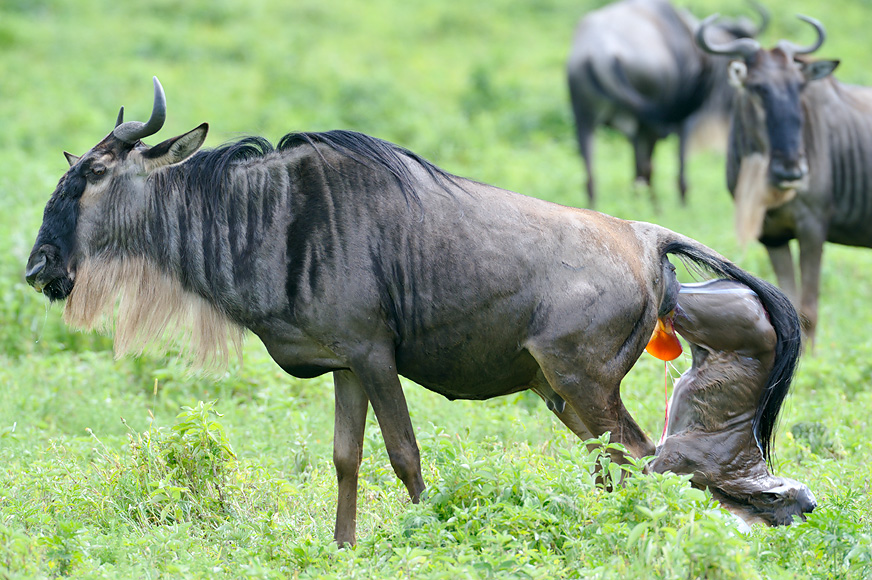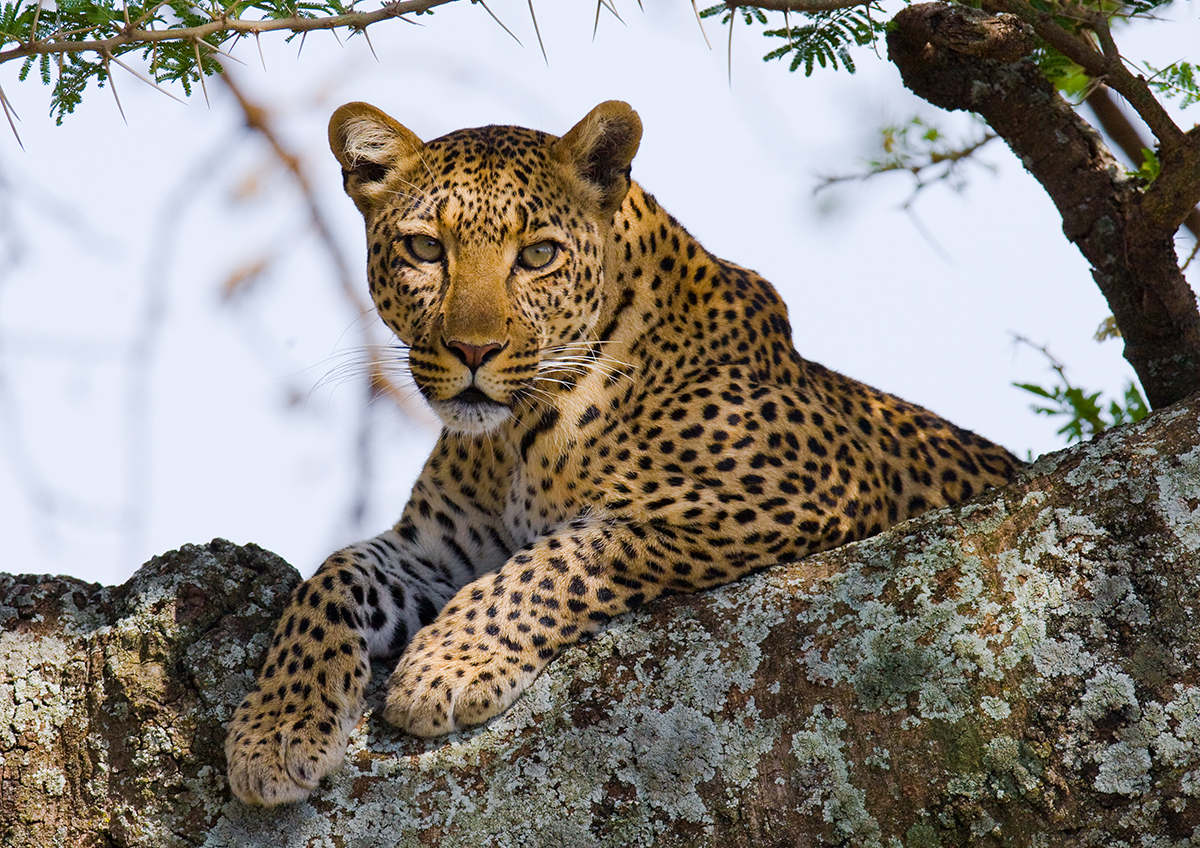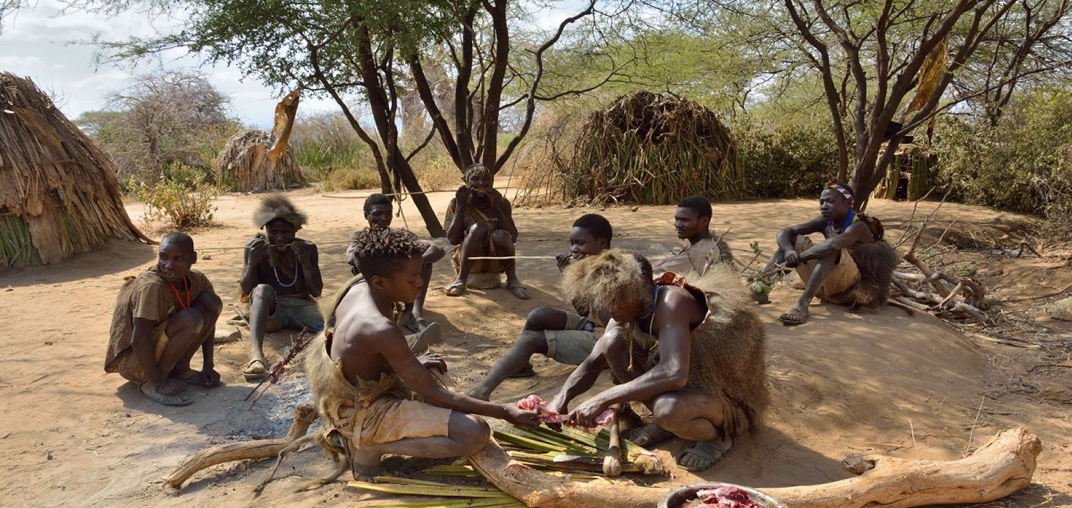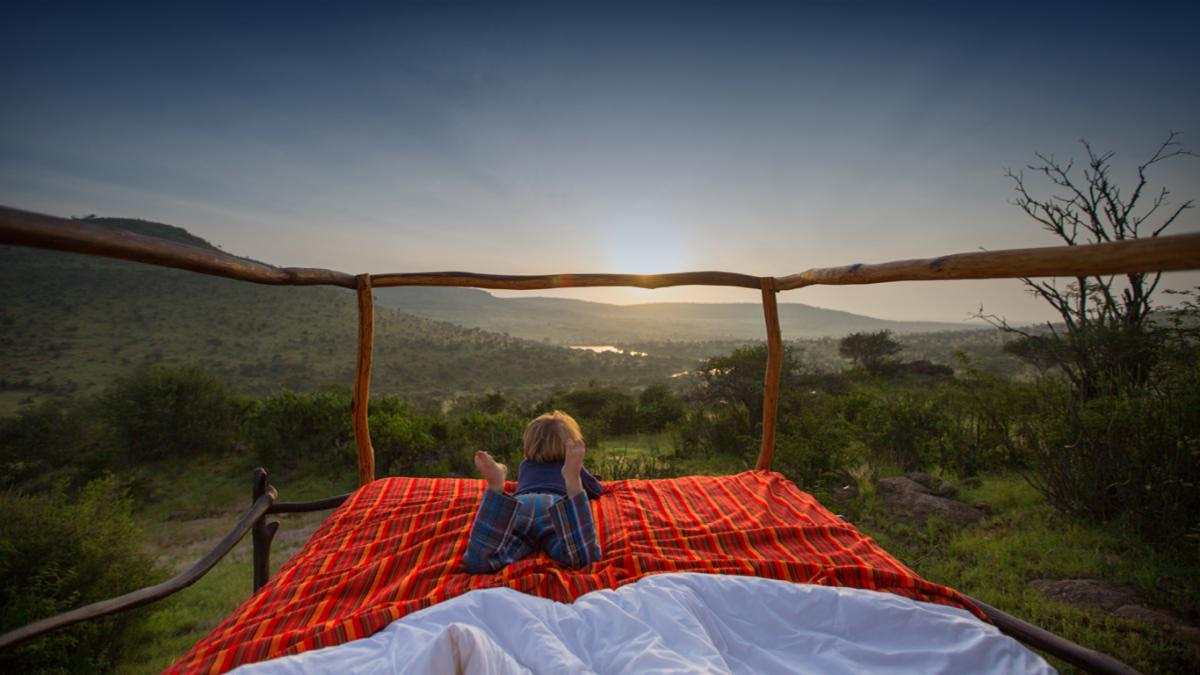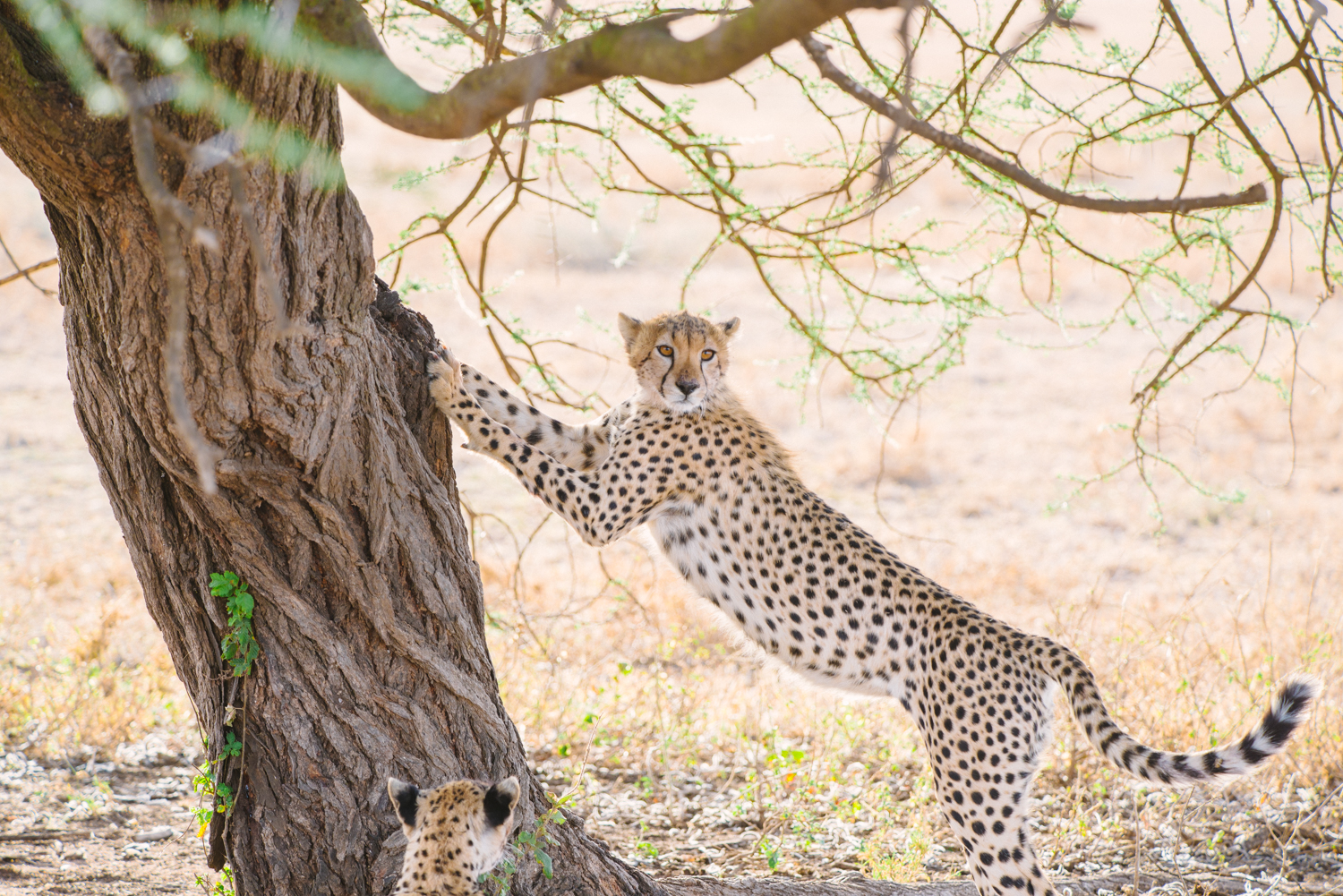Inquisitive Safaris are designed to explore the most amazing destination in Africa
SERENGETI NATIONAL PARK
The Serengeti, the largest National Park in Tanzania is one of the most famous National Parks in the world. Its landscape includes large plains, short grass plains, kopjes, and lakes. The name “Serengeti” is derived from the Maasai language, meaning “endless plain”. Every year, more than one million wildebeest travel in long caravans across the plains of the mighty Serengeti, all in search of better feeding grounds, followed by a large variety of other animals. Not far behind follow the hungry lions, cheetahs, and hyena. Other predators such as leopards, serval cats, and jackals watch the wandering game with interest, and elephants, rhinos, and buffalo continue their grazing.
Wildlife Highlights: wildebeest, zebra, lion, leopard, elephant, rhinoceros, buffalo, cheetah, gazelle, giraffe,spotted hyena, jackal, aardwolf, serval, agama lizard, rock hyrax, secretary bird, ostrich, black eagle & most visited park in Tanzania; famous for massive migration of ungulates; more than 500 bird species.
KRUGER NATIONAL PARK
Our unique packages capture the essence of the Kruger National Park a South African National Park and one of the largest game reserves in Africa. It covers an area of 19,485 km2 (7,523 sq mi) in the in the provinces of Limpopo and Mpumalanga in northeastern South Africa, and extends 360 km (220 mi) from north to south and 65 km (40 mi) from east to west. The administrative headquarters are in Skukuza. Areas of the park were first protected by the government of the South African Republic in 1898, and it became South Africa’s first national park in 1926. To the west and south of the Kruger National Park are the two South African provinces of Limpopo and Mpumalanga, respectively. To the north is Zimbabwe, and to the east is Mozambique. It is now part of the Great Limpopo Transfrontier Park, a peace park that links Kruger National Park with the Gonarezhou National Park in Zimbabwe, and with the Limpopo National Park in Mozambique.
The park is part of the Kruger to Canyons Biosphere, an area designated by the United Nations Educational, Scientific and Cultural Organization (UNESCO) as an International Man and Biosphere Reserve.
MASAI MARA NATIONAL RESERVE
The Masai Mara is one of Africa’s most famous parks. The wildlife viewing is superb throughout the year. The grassy plains and regular rainfall support a huge population of herbivores, in turn attracting many predators. All three big cats are relatively easy to see. The yearly wildebeest migration coming through the park is one of the world’s most amazing wildlife spectacles.
The Great Wildebeest Migration Tracking-Calendar the annual -wildebeest migration of herds in Northern Tanzania and Kenya is one of the world’s most spectacular wildlife events. Often referred to as the ‘Greatest wildlife Show on Earth’, The Great Wildebeest Migration is a movement of approximately 2.5 million wildebeest and zebra throughout the Serengeti and Masai Mara ecosystem. December to March the Wildebeest migration congregates around Ndutu area, in the far south of the Serengeti. April to May, the Wildebeest migration moves north into the plains of the central Serengeti. Between June and July, the Wildebeest migration splits in two; one group goes West into the Western Corridor before crossing the Grumeti River, the other heads directly to the North of the Serengeti. (NB: The annual rut (mating season) takes place between May and July, following the rainy season, when the wildebeest can feed on lush, healthy greens. The best location to spot the migrant animals is in Western Serengeti and Grumeti game reserves). August to October the herd has reformed, and meanders on the Kenya and Tanzania border, along the banks of the mighty Mara River. Returning south from the beginning of November. Unpredictable Nature The path of The Wildebeest migration is dependent on rain. The endless plains of East Africa bear witness to the great annual migration of over a million wildebeest and zebras as they make their way between Kenya and Tanzania in search of fresh grazing pastures. In the latter case, the herds may split and later re-group.
VICTORIA FALLS
Victoria Falls is a waterfall on the Zambezi River in southern Africa, which provides habitat for several unique species of plants and animals.
The falls presents a spectacular sight of awe-inspiring beauty and grandeur on the Zambezi River, forming the border between Zambia and Zimbabwe. It was described by the Kololo tribe living in the area in the 1800s as ‘Mosi-oa-Tunya’ – meaning ‘The Smoke that Thunders’. In more modern terms Victoria Falls is known as the greatest curtain of falling water in the world.
Columns of spray can be seen from miles away as, at the height of the rainy season, more than five hundred million cubic meters of water per minute plummet over the edge, over a width of nearly two kilometers, into a gorge over one hundred meters below.
OKAVANGO DELTA
The Okavango Delta in Northern Botswana is one of Africa’s last great natural sanctuaries, a pristine and rich wilderness home to vast concentrations of wildlife. There are several private reserves in the delta, as well as Moremi Game Reserve. the iconic Okavango offers a true wilderness experience, excellent wildlife viewing and stunning scenery. Walking safaris and mokoro (dugout-canoe) trips are a great addition to the usual game drives.
The delta is a vast area and wildlife viewing is dependent on your location. Moremi Game Reserve is the most productive and four of the Big Five are easily seen. Rhino are present in Moremi, but not seen that often. Elephant and hippo are abundant throughout the delta and wild dogs are quite common. The water loving red-lechwe and waterbuck are easy to see from a mokoro.
The iconic Okavango Delta has seasonal wildlife viewing and best time to visit is in the dry months, from July to October, as there is an influx of animals gathering at the delta. During the wet months, from January to March, many areas become inaccessible, and some lodges close down.
ETOSHA NATIONAL PARK
Our unique packages capture the essence of the Etosha National Park in Namibia. Etosha National Park is Namibia’s top game-viewing destination and rated as one of the best safari destinations in Africa. Covering some 22 270 square kilometers of dramatic landscapes in northern Namibia, Etosha is home to a rich diversity of wildlife and birds, despite its stark appearance. The open terrain and sparse vegetation are ideal for spotting animals, especially when they congregate at watering holes during the winter months from June to August. The unique Etosha Pan stretches out over about a quarter of the park in an endless dry expanse where mirages rise in the heat, except when the rains come and transform the barren desert into shimmering, shallow lakes.
Dominated by the desert like Etosha-Pan of northern Namibia, towards the Angolan border, this famous national park provides a stark and captivating setting for watching its high concentration of African wildlife. The action packed-wildlife show of Etosha Park boasts a dazzling cast that counts the endangered black rhino and black faced-impala, in its 114-mammal species.
In Etosha, visitors will see big game wandering along the fringes of the vast white sand-pan and emerging from the mirages to roam across the open plains. The easiest way to spot an assortment of game is to stay put at one of the many watering holes that dot the bush, south of the dusty pan. Out here in the harsh environment of Etosha the dramatic battle for survival plays itself out as hyena, lion, cheetah, jackal and other hunters compete for prey. The smorgasbord of fair game for hungry predators includes zebra, giraffe and a varied selection of antelope, such as gemsbok, eland, kudu, roan, red hartebeest and blue wildebeest.
SELINDA RESERVE
The Selinda Spillway is the perfect place for exclusive wildlife viewing. The Selinda Spillway flows in two directions, meandering its way as it links the far-reaches of the Okavango Delta in the south with the Linyanti wetlands in the west. This area of Botswana receives water from both these sources. In the West lies the famous Savute Channel, Chobe as well as the mighty Zambezi, the North one can find Namibia’s Caprivi Strip and Angola.
The private 130,000-hectare Selinda Reserve boasts elephants by the thousands, regular sightings of the Selinda pack of African wild dogs as well as the famous Selinda Lion Pride recently feature in the National Geographic film “Birth of a Pride” by Dereck and Beverly Joubert. The area has a sense of remoteness, a true spirit of Africa, and is a great example of Botswana bush embodying a variety of species and rare animals.
Guests enjoy a fully inclusive safari option at Selinda Camp inclusive of all activities as well as meals, park fees, alcoholic and non-alcoholic beverages (excluding imported and premium spirits).
Travelers enjoy thrilling safari drives early in the morning and late in the afternoon which is conducted in open 4×4 vehicles. Relaxing in-room massages can be booked. Boat-based activities are available at this camp when the water levels permit.
QUEEN ELIZABETH NATIONAL PARK
Queen Elizabeth National Park is the oldest & second largest National Park in Uganda, it is located at the base of the massive Rwenzori Mountains, adjacent to lakes Edward & George, covered by Savannah plains that provide an abundance of Game viewing like; Elephants that trumpet when you get too close, lazy Leopards laying in the sun, abundant Gazelle and buck, Lions, Buffaloes, Hippos and others.
CHOBE NATIONAL PARK
Discover the iconic Chobe National Park also known as Botswana’s first national park, and also the most biologically diverse. Located in the north of the country, it is Botswana’s third largest park, after Central Kalahari Game Reserve and Gemsbok National Park, and has one of the greatest concentrations of game in all of Africa. This park is noted for having a population of lions which prey on elephants, mostly calves or juveniles, but even subadults.
The original inhabitants of this area were the San-bushmen (also known as the Basarwa people in Botswana). They were nomadic hunter-gatherers who were constantly moving from place to place to find food sources, namely fruits, water and wild animals. Nowadays one can find San paintings inside rocky hills of the park.
You can see animals year-round at Chobe, but the Dry season (April to October) is when wildlife viewing is at its best here, particularly along the southern bank of the park’s broad, namesake river. You’ll also see some unforgettable sunsets across the water at this time, though you’ll be elbowing the high-season crowds while checking them out.
MOUNT KILIMANJARO NATIONAL PARK “As wide as the World, great, high, and unbelievably white in the sun” Ernest Hemingway`
Mount Kilimanjaro (5,895 m – 19,340 ft) is the highest mountain in Africa and the tallest free-standing mountain on the Earth’s land surface, rising some 4,600 meters (15,000 ft). above the surrounding plains and savannas. Kilimanjaro is a triple volcano (it has three peaks) that last erupted more than 100,000 years ago but still exudes volcanic gases.
While climbing it, you will pass from a tropical to an arctic climate in just a few days.
The encircling rain forest ensures the fertility of the lush, lower-lying shamba (country), where the chagga people cultivate their coffee, maize and bananas -Monkeys, birds and Antelopes abound. Elephants and Buffalos range through the forest, and leopards are occasionally seen.
Surprisingly, you may meet herds of eland as high as on the saddle between Kibo and Mawenzi, the two highest summits of Kilimanjaro. Most fit individuals with some mountain walking experience can make it to the top of Africa.
VOLCANOES NATIONAL PARK
Tracking endangered mountain gorillas through the mysterious intimacy of the rainforest, alive with the calls of 200 species of colorful-birds and chattering of the rare golden monkey, is only one of the truly unique experiences in the area. Situated in the far northwest of Rwanda, Volcanoes National Park protects the steep slopes of this magnificent mountain range, home of the endangered mountain gorilla and a rich mosaic of montane ecosystems, which embrace evergreen and bamboo forest, open grassland, swamp and heath.
Volcanoes National Park is named after the chain of dormant volcanoes making up the Virunga Massif: Karisimbi the highest at 4,507m, Bisoke with its verdant crater lake, Sabinyo, Gahinga and Muhabura.
Within the boundaries of Volcanoes National Park are Buhanga Eco-Park, an ancient forest holding Rwanda’s most intriguing folklore and musanze Caves, formed 62 million years ago after the last estimated volcanic eruption.
NGORONGORO CONSERVATION AREA
One of nature’s true wonders and a photographer’s paradise! The crater, a UNESCO world heritage site, is the largest unbroken volcanic caldera on the globe. It is 610m deep and the flat crater floor covers 265 square kilometers. The steep sides of the crater mean that it has become a natural enclosure for a very wide variety of wildlife including elephants, black rhinoceros, hippopotamus, buffalo, cheetahs, lion, leopard, spotted hyena, serval cats, jackals, bushbucks, elands, waterbucks, wildebeest, mountain reedbuck, Many antelopes and large variety of Birds such as ostrich, kori bustard, papilio sjoestedti. The crater is a sight that you will always remember. However the Ngorongoro conservation Area offers more than just the crater. Many archeological and paleontological sites: Olduvai Gorge, Laetoli, The crater highland is a beautiful and unique landscape with alkaline soda lakes, a series of peaks and volcanoes, dense rainforest, and remote Maasai villages.
ONGUMA GAME RESERVE
Discover the Namibia’s hidden treasures. Onguma Game Reserve situated on the eastern side of Etosha, bordering Fisher’s Pan. Onguma Game Reserve is one of Namibia’s best kept secrets. Here you will be afforded the opportunity of experiencing Africa in all her beauty and diversity. Onguma Game Reserve has more than 34,000 hectares of protected land and wildlife with 5 lodges, two campsites of private wilderness to explore, Onguma has an accommodation option that is just right for you!
Onguma offers great game viewing, romance, tranquility, adventure and so much more! neighboring fisher’s Pan and sheltering some 30 different species of plains wildlife. Find zebra, impala, giraffe, kudu, and oryx on game drives through the region, and perhaps even find cheetah, leopard, and lion in pursuit. Birding enthusiasts will be kept busy too, watching the trees and the skies for some of the 300-bird species that have been sighted within the reserve.
Onguma means “the place you don’t want to leave” in the Heroro language, and the varied options in the reserve succeed in completely enveloping visitors in this magical place. Guests have a choice of a range of accommodations from safari campsites to sprawling tented suites.
BWINDI IMPENETRABLE NATIONAL PARK
Uganda’s gorillas are found in Bwindi National Park and Mgahinga National Park. Bwindi is home to more gorilla families and is generally considered a better area to gorilla track. The number of gorillas in Mgahinga is limited to just one family, and they often cross the border into Rwanda which makes tracking them impossible.
Bwindi has 17 habituated gorilla families across 4 distinct areas, Nkuringo, Buhoma, Ruhija and Rushaga. There are currently a further two families being habituated in Rushaga. The gorillas here live in thick tropical forest and tracking can be challenging as the hillsides can be steep, it can take around 2-8 hours to reach the gorillas.
The parks altitude ranges from 1200-2600 meters and five rivers and a high annual rainfall make it rather humid. The rainforest here is said to be 25,000 years old, and in this time, biodiversity has flourished. Although best known for its mountain gorillas, the National Park is also home to an amazing 120 species of mammal (other primates include chimpanzees and monkeys), 51 species of reptiles and over 200 tree species. In addition, the birdlife is spectacular – 350 species are to be found here, including 23 of the 24 Albertine rift endemic bird species, including the African green broadbill and bar-tailed trogon.
Buhoma Area – Northern Bwindi: There are 4 gorilla families in Buhoma, northern Bwindi, with a maximum of eight visitors allowed to each group per day. The permits are sold in advance, 30% of the permits are sold two years in advance, 50% one year in advance and 20% six months in advance, I therefore encourage you send us your booking as early as possible.
Nkuringo Area – Southern Bwindi: There are 3 gorilla families in Nkuringo, Southern Bwindi, with a maximum of eight visitors allowed per day to each family. The point at which clients begin tracking is right next to the lodges and can pass through interesting local villages and tea plantations on the way into the deeper forest. The ‘Nkuringo’ family is said to be one of the most relaxed and interesting in Bwindi.
KALAHARI DESERT
The Kalahari Desert is a large semi-arid sandy savannah in Southern Africa extending for 900,000 square kilometers (350,000 sq mi), covering much of Botswana, parts of Namibia and regions of South Africa.
One of the most interesting Kalahari Desert facts is that it is not a desert in the strictest sense of the word, as it receives too much rainfall – between 5 and 10 inches annually. However, any rain filters rapidly through the vast expanses of sand, leaving nothing on the surface, turning the Kalahari into the “thirst-land”. The name “Kalahari” is derived from the Tswana word Kgala, meaning “the-great-thirst”, or Kgalagadi, meaning “a-waterless-place”.
The temperatures in the Kalahari Desert are extreme, with summers being very hot while winter temperatures can go below zero degrees Celsius at night. This is a result of the Kalahari’s relatively high altitude and predominantly clear, dry air. In summer, temperatures can reach 45 degrees Celsius (115 degrees Fahrenheit); on winter nights, lows can drop to minus 15 degrees Celsius (seven degrees Fahrenheit).
WATERBERG PLATEAU NATIONAL PARK
Waterberg Plateau is a unique flat-topped plateau with stunning scenery and excellent wildlife in central Namibia on the Waterberg Plateau, 68 kilometers (42 mi) south-east of Otjiwarongo. The plateau and the national park are named after the prominent Table Mountain that rises from the plateau, the Waterberg (Afrikaans: Water Mountain). The Waterberg Plateau is a particularly prominent location, elevating high above the plains of the Kalahari of Eastern Namibia. Waterberg Park and some 405 square kilometers (156 sq mi) of surrounding land were declared a Nature Reserve in 1972. As the plateau is largely inaccessible from beneath several of Namibia’s endangered species were relocated in the early 1970s to protect them from predators and poaching to extinction. The program was very successful and Waterberg now supplies other Namibian parks with rare animals. In 1989, the black rhinoceros was reintroduced to the area from Damaraland.
The Waterberg Plateau Park is ecologically diverse and rich and has over 200 different species of bird with some rare species of small antelope on the lower hills of the mountain. Geologically, the oldest rock stratum is over 850 million years old and dinosaurs’ tracks were left there some 200 million years ago.
The foothills of the Waterberg Plateau were the location of a poignant turning point in the Battle of the Waterberg in 1904. The Herero people under Samuel Maharero, were resisting German colonial expansion as part of the scramble for Africa. The Germans had achieved some military progress before the execution of the final battle plan on 11 August 1904, which involved cornering the Herero army and their families at the Waterberg Plateau. Many of the Herero people managed to escape eastwards into the Omaheke desert where their troubles only grew resulting from a lack of food and water causing further deaths. Maharero and about 1000 men managed to cross the Kalahari into British Bechuanaland where they were granted asylum.
ZAMBEZI NATIONAL PARK
Zambezi National Park is a great destination for a day trip from Victoria Falls the opportunities to get close to game wandering in and out of the Zambezi channels are spectacular as the Park lies opposite the famous Mana Pools Reserve in Zimbabwe, even though the Lower Zambezi National Park covers an area of 4092 square kilometers, most of the game is concentrated along the valley floor. There is an escarpment along the northern end which acts as a physical barrier to most of the Park’s animal species. Enormous herds of elephant, some up to 100 strong, are often seen at the river’s edge. ‘Island hopping’ buffalo, there is a good variety of antelope including waterbuck, impala and sable. The Park also hosts good populations of lion and leopard, and listen too for the ubiquitous cry of the fish eagle.
The broad Zambezi River draws many thirsty animals in the Dry season (April to October). This is also when Victoria Falls is at its most thunderous, thanks to the zambezi peak water flows. The Wet season months see less visitors and low-season rates might be available.
RUAHA NATIONAL PARK
Ruaha is a remote stronghold of spectacular wilderness, undisturbed wildlife, and breathtaking scenery. With vast concentrations of elephants, buffaloes, zebras, lions and leopards, and over 400 bird species, Ruaha’s limitless wilderness is a naturalist’s paradise.
Wildlife Highlights: elephant, hornbill, kingfisher, Sunbird, white stork, African wild dog, sable antelope, greater kudu, crested barbet, yellow-collared lovebird & more than 400 bird species, high diversity of antelopes.
OKONJIMA NATURE RESERVE
Our unique packages capture the essence of the OKONJIMA NATURE RESERVE a reserve is a rehabilitation center for big cat, and includes the Okonjima Plains Camp and several other Okonjima lodges. Okonjima Nature Reserve has a number of leopards and cheetahs both completely wild and wild but with radio tracking collars.
The reserve is 22,000 hectares which is actually pretty massive. It definitely feels wild and not like other smaller rehabilitation centers in Africa today. It’s more like a game drive really like so massive that you could literally drive around the reserve for hours.
The jeeps all set out in different directions attempting to find different cats, often with two jeeps working together in an area. They say there’s a 50/50 chance of spotting the elusive leopard on an Okonjima leopard tracking activity – good luck!
If you only have one night at Okonjima Plains Camp, you should aim to arrive in time for the afternoon activity and leave after the morning activity. The leopard and cheetah tracking activities really are the highlight of the visit.
We visited in winter (early June – chilly chicken!). The Okonjima afternoon activity started with coffee at 3pm and departure at 3:30pm, and returned at around 6:30pm-7pm after a sundowner drink. The morning activity started with coffee at 6:30am and departure at 7am, and returned for (a very large and very tasty!) brunch around 9:30-10:00am.
If you’re there in winter, make sure you wrap up warm, especially in the morning. I was rugged up in a jacket, scarf, gloves and beanie. Even then, I was still a little chilly until the sun warmed up late morning!
MOUNT MERU
3-4 days. Meru is Tanzania‘s second highest mountain and the fifth highest in Africa. Aside from being a rewarding and picturesque trek in its own right, it is also ideal for acclimatizing for your Kilimanjaro trek.
SELOUS & NYERERE NATIONAL PARK
The Selous Game Reserve, another UNESCO world heritage site is the largest protected area on our planet, covering an area of around 50,000 sq. km. Its size is stunningly bigger than Switzerland or Denmark, uninhabited and little touched by human interference. Visitors can find themselves in a pristine wilderness, far away from the trodden tourist routes.
The Selous, whose aorta is the mighty Rufiji River has a spectacular wildlife with some mammal populations (buffaloes, elephants, hippos, wild dogs and crocodiles) being the largest in Africa. Nowhere else can one do boat and walking safaris through more spectacular wildlife concentrations. There are around 440 species of birds in the Selous, making it a prime spot for bird watchers. The landscapes vary from open grassland to acacia and miombo woodlands, and to riverine forests.
CHYULU HILLS NATIONAL PARK
Verdant rolling hills of endless green, great blue skies and spectacular landscape views are what the Chyulu Hills provide to nature lovers. The Chyulu’S are one of the youngest mountain ranges in the world, having been formed only about 500 years ago. The volcanic scenery is fascinating, but human encroachment with cattle and poaching are major problems. A worthwhile activity is a visit to the Upper Leviathan Cave, which at 11.5km long, is one of the longest caves in the world.
Chyulu Hills can be visited year-round, but wildlife viewing is usually best in the dry months from June to October and January to February. Visits during the peak of the short rains (November), and especially during the long rains (April and May), might be challenging. The park is usually visited as a side trip from Tsavo West. It is located 232km/144mi from Nairobi and 250km/155mi from Mombasa.
TARANGIRE NATIONAL PARK
Tarangire includes two large plains and a seasonal swamp in the South. The park is filled with baobab and acacia trees. During the dry season herds of thirsty animals such as zebras, elephants, giraffes and waterbucks wander hundreds of perched miles to the Tarangire River, knowing that there can be water found – always. Also the park’s birdlife is varied and plentiful.
Wildlife Highlights: oryx, gerenuk, elephant, baobab, lesser kudu, African wild dog, lion, kori bustard, ground hornbill, ostrich, yellow-collared lovebird, Rufous-tailed Weaver, ashy starling, dwarf mongoose, red-and-yellow barbet & 550 bird varieties; largest concentration of wildlife behind Serengeti
ONGAVA PRIVATE GAME RESERVE
Sharing the southern boundary with Etosha National Park, the prolific 30 000-hectare private Ongava Game Reserve is considered one of the top private game reserves in the region, enjoying global recognition for exceptional conservation, ground-breaking research and exciting safari experiences. The landscape is characterized by vast open plains dotted with salt plans and abundant wildlife. Visitors can easily access Etosha through Andersson’s Gate in the south. Known for its luxury lodges made out of natural materials, Ongava is a popular destination for those looking to immerse themselves in nature. The reserve offers visitors the perfect combination of wildlife safari experiences within and around the Etosha National Park. One of Ongava’s top attractions is its rhino population and guests can experience the thrill of getting close to these majestic creatures. Popular activities include: night game drives, guided nature walks, bird watching and 4×4 guided game drives.
AMBOSELI NATIONAL PARK “Home of the African Elephant”
Crowned by Mount Kilimanjaro, Africa’s highest peak, the Amboseli National Parks is one of Kenya’s most popular parks. The name “Amboseli” comes from a Maasai word meaning “salty dust”, and it is one of the best places in Africa to view large herds of elephants up close. Nature lovers can explore five different habitats here ranging from the dried-up bed of Lake Amboseli, wetlands with Sulphur springs, the savannah and woodlands. They can also visit the local Maasai community who live around the park and experience their authentic culture.
LAKE MANYARA PARK
Lake Manyara is famous for its birdlife – almost 400 different species of birds can be found in and around the impressive ground water forests which are also home to tree climbing lions, elephant populations and diademed monkeys. There is a large variety of tree species within the park.
Wildlife Highlights: elephant, Cape buffalo, lion, hippopotamus, impala, giraffe, zebra, wildebeest, bushbuck, leopard, baboon, lesser,flamingo, greater flamingo, white pelican, yellow-billed stork, white-breasted cormorant, palm-nut vulture, Ayres Hawk-eagle, Nile monitor, cobra & greatest biomass density in the world; tree-climbing lions
LAKE NAKURU NATIONAL PARK
Scenic Lake Nakuru is Kenya’s most popular national park. The park’s main feature is a large, shallow lake supporting great birdlife, including big flocks of pelicans and variable flocks of flamingos. The lake was once famous for its flamingos, however, since 2012, conditions have become unfavorable for these birds and most have moved to other Rift Valley lakes.
Lake Nakuru offers easy wildlife viewing of most big safari animals with the exception of elephants. Black and white rhino were reintroduced in the 1990s and have bred to healthy populations. White rhinoceros are usually easy to see on the lakeshore. Rothschild giraffe, buffalo and hippo are numerous as well. Lucky visitors might see lions, which occasionally climb trees. Leopard are present, but not often encountered.

